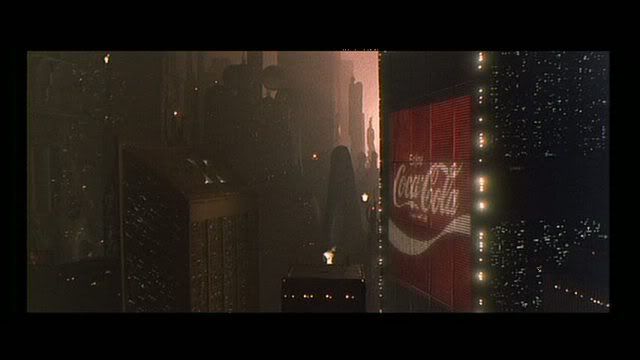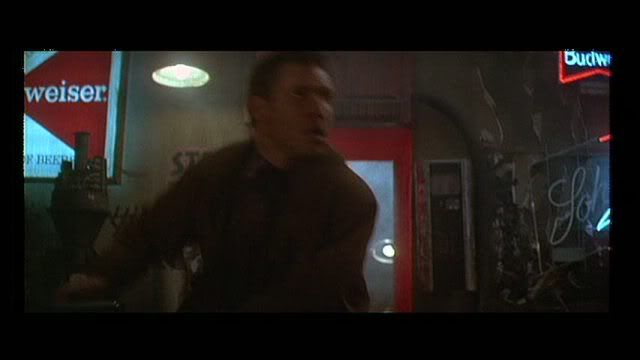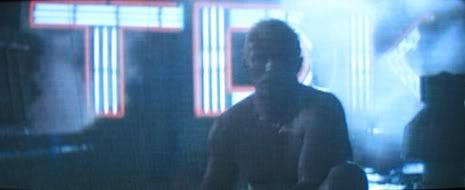This blog is in response to Clay Greer’s two blogs that cover capitalism in Falling Down and greed in There Will Be Blood, and has nothing to do with those two films.
However, the focus on the themes of greed and capitalism in Clay’s blogs stuck in my head and rattled around in there while I watched the director’s cut of Ridley Scott’s Blade Runner (1982) with a friend who had never seen it. Briefly: Blade Runner is a movie that takes place in a futuristic and very Japanese Los Angeles. It centers around a character named Deckard (Harrison Ford) whose job it is to track and terminate artificially created humans (called Replicants) when they stray from their duties of off-world superhuman manual labor.
I have seen this movie several times, but this time watching it I had the above mentioned themes of capitalism and greed in mind, and noticed lots of not so subtle product placements within the film. First, a giant electronic billboard displaying the classic Coke logo shows up three times in scenes depicting Deckard being transported in a flying car. The repetition of this product placement seems to say, “Like that flying car? Well, Coke paid for it.”

There is also a chase scene in which neon Budweiser signs appear behind Deckard as he chases a replicant through a bar. “When you’ve had a long day running down artificial humans through L.A., why not settle down to a nice cold Budweiser?”

And the final fight scene of the film between Deckard and a Replicant named Roy Batty (Rutger Hauer) atop a not-so-futuristic building includes a slightly out of focus TDK neon sign in the background of several shots. “Dramatic end of film fight scene brought to you by TDK, fine purveyor of all your cassette tape needs (it’s still 1982, folks, no CD’s or mp3’s yet…).”

Although these product placements no doubt earned the film some extra cash, which in turn probably helped fuel the production of the film (successful sci-fi has never been cheap, and the flying car scenes which showoff the landscape/cityscape of futuristic L.A. still look believable, nice work for 1982 and no CGI), I can’t help but wonder if there is more being said within the content of the film by including these product placements. For instance, does a film that depicts a culture materialistic enough to artificially create human beings benefit from capitalistic product placements within the film? Perhaps Ridley Scott uses these product placements to say something about such a society. He could be warning his viewers of how close our reality is to such a society. Or, he could just simply be allowing a few corporations to pay for his expensive science fiction film. You decide.
And away!